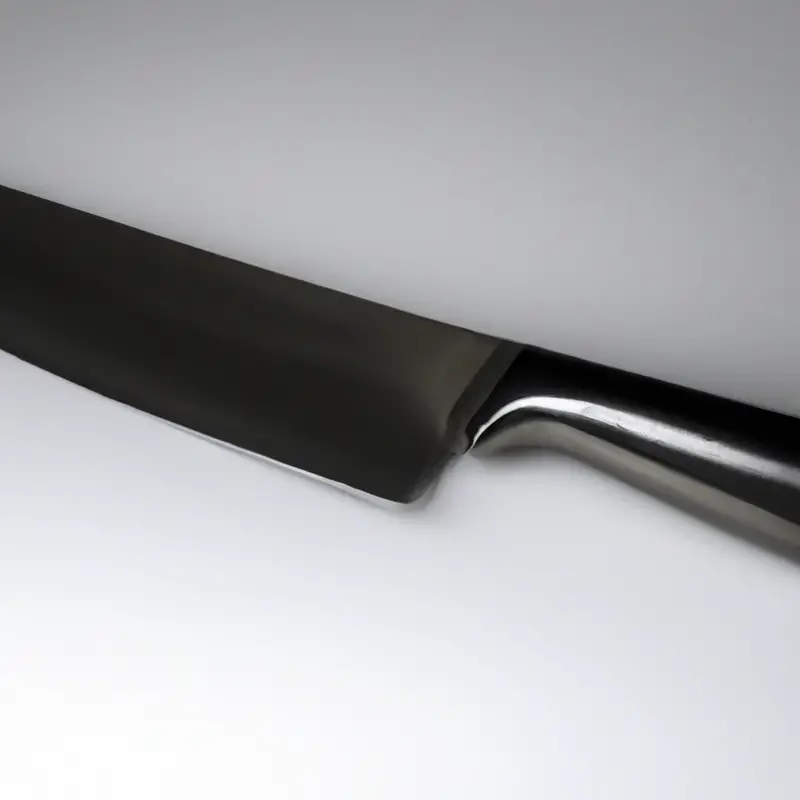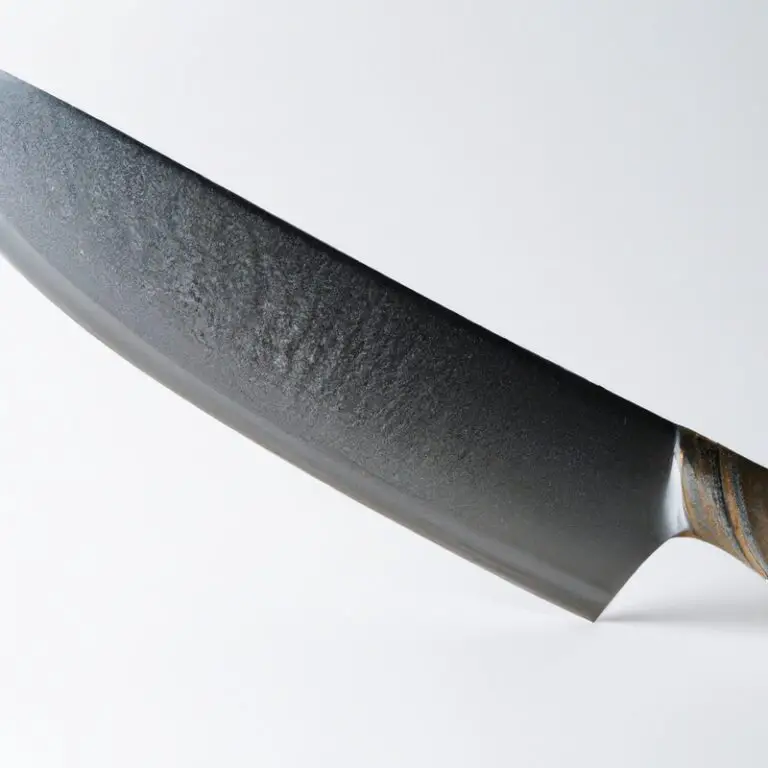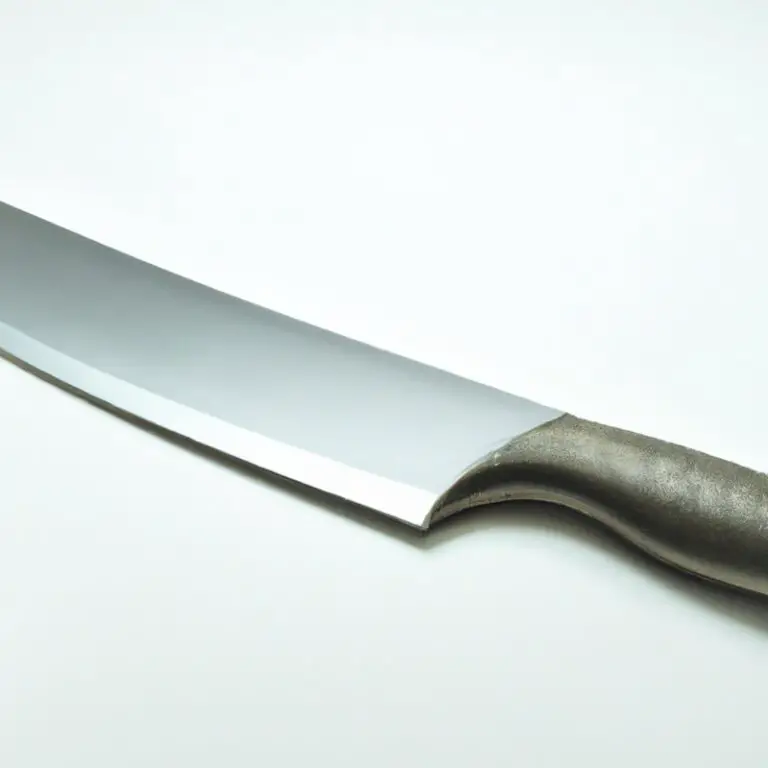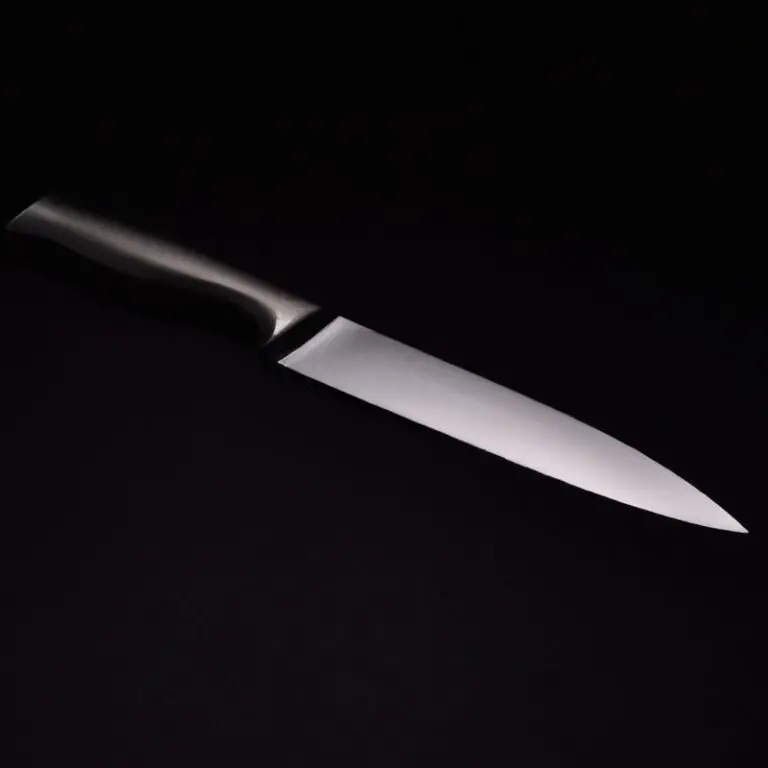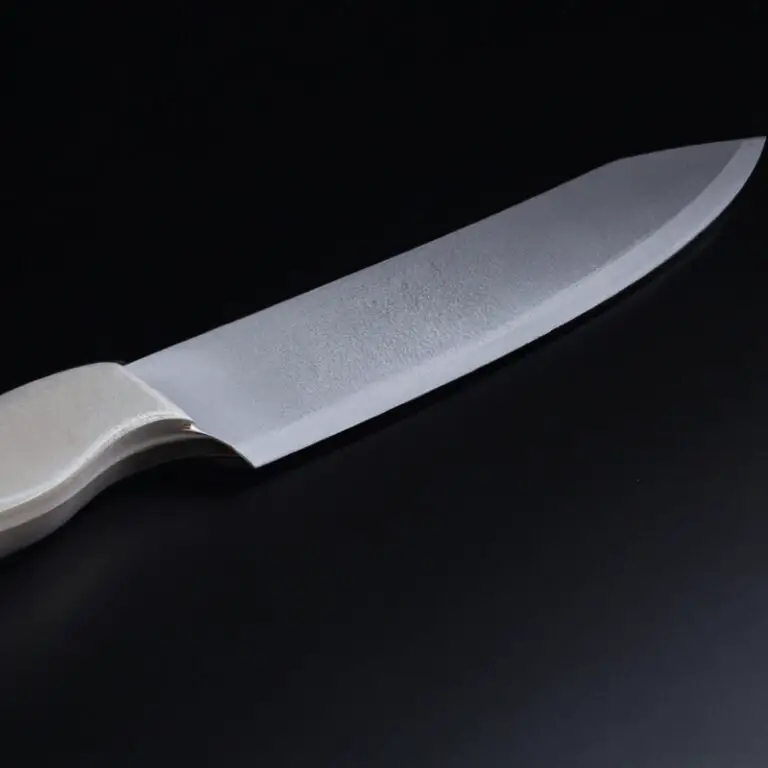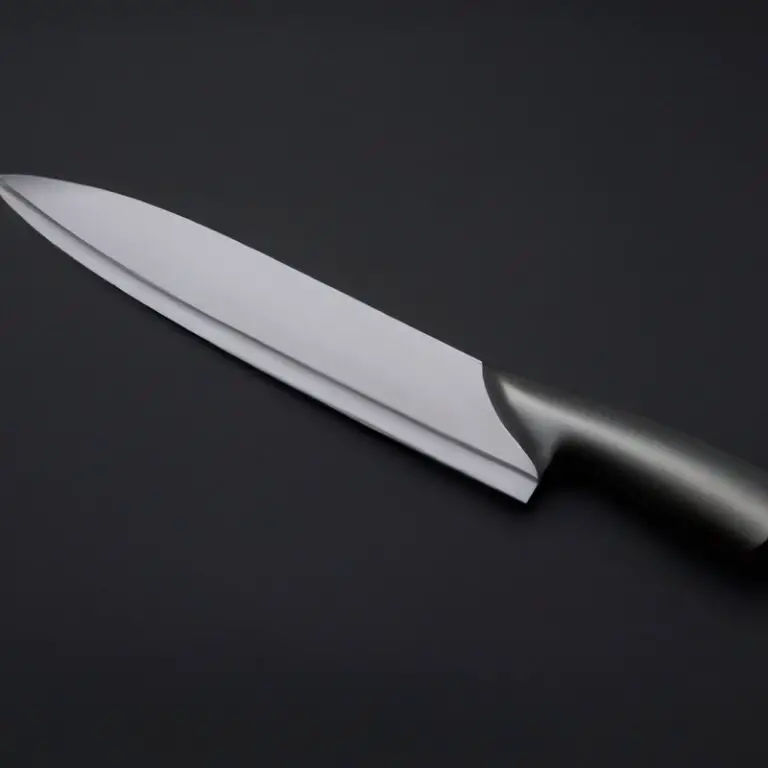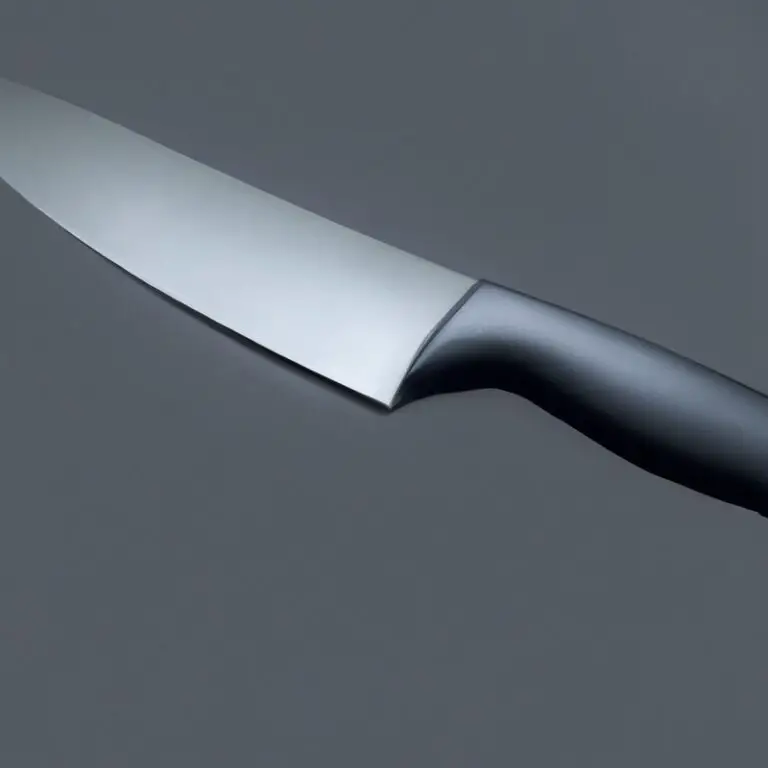How To Julienne Vegetables Using a Santoku Knife? – Easily!
Key Takeaways:
- A Santoku knife’s specialized design makes it an excellent tool for julienning vegetables, allowing for precision cuts and efficient prep work.
- To julienne vegetables using a Santoku knife, start by prepping the vegetables properly and honing the knife beforehand for best results.
- When julienning with a Santoku knife, be sure to keep your fingers and thumb tucked in and out of harm’s way, while maintaining a steady pace and taking your time to avoid accidents.
- A properly julienne vegetable can enhance the presentation and texture of any dish, making it a valuable technique to master for home cooks and professional chefs alike.
Have you ever struggled with cutting vegetables into thin, uniform strips? Julienne cuts can elevate the presentation and texture of your dishes, but the process can be time-consuming and frustrating.
Enter the Santoku knife, a versatile tool that can make this task a breeze.
As someone who loves to cook, I understand the importance of having the right tools in the kitchen, which is why I’m excited to share my knowledge on using a Santoku knife for julienne vegetable preparation. From choosing the right vegetables to achieving consistent cuts, this guide has got you covered.
Let’s dive in!
| Step | Description |
|---|---|
| Step 1 | Cut off both ends of the vegetable and rest it on one of the flat surfaces created. |
| Step 2 | Use the Santoku knife tip to create thin slices of the vegetable. The slices should be as thin as possible. |
| Step 3 | Stack the slices on top of each other, and make lengthwise cuts to create matchstick-like pieces. |
| Step 4 | Hold the vegetables tightly together and make crosswise cuts to create small, uniform the julienne cuts. |
Understanding The Santoku Knife: Features And Benefits For Julienne Vegetable Preparation
The Santoku knife is a Japanese knife that has become increasingly popular in Western kitchens. Its name means “three uses” and refers to its versatility in chopping, slicing, and dicing.
When it comes to julienne vegetable preparation, the Santoku knife is an excellent choice due to its unique features.
The knife’s blade is typically shorter and wider than other knives, allowing for more control and precision when cutting. Its flat edge makes it easier to dice vegetables, while the gentle curve of the blade makes it ideal for cutting through tough skins or rinds.
The Santoku knife also has a granton edge, which creates air pockets when slicing, preventing vegetables from sticking to the blade.
Using a Santoku knife for julienne vegetable preparation has several benefits. The knife’s design allows for thinner and more precise cuts, resulting in evenly-sized pieces that cook more quickly and evenly.
Its wide blade also makes it easier to transfer vegetables to a pan or plate.
Furthermore, the sharpness of the knife means that vegetables are less likely to bruise or turn brown, resulting in a more appealing final dish. Understanding the features and benefits of a Santoku knife is essential for julienne vegetable preparation.
Its unique design and sharpness make it an ideal choice for achieving uniform and consistent cuts for your dishes.
Top Benefits Of Julienne Vegetable Preparation With A Santoku Knife
One of the top benefits of julienne vegetable preparation with a Santoku knife is the ability to achieve precise and uniform cuts. The Santoku knife’s thin, sharp blade allows for effortless slicing, resulting in evenly sized pieces of vegetables.
This not only improves the dish’s presentation but also ensures that each piece cooks evenly, reducing the chances of undercooked or overcooked veggies.
Additionally, the Santoku knife’s ergonomic design and lightweight construction make it easy to handle and control. This is crucial when cutting vegetables into julienne strips as it requires a steady hand and attention to detail.
With a Santoku knife, chefs can easily maneuver the blade and create thin, even cuts without the risk of hand fatigue or injury.
Another benefit of using a Santoku knife for julienne cuts is its versatility. The blade can be used to cut a wide range of vegetables, from soft produce like tomatoes and cucumbers to denser vegetables like carrots and potatoes.
This makes it a useful tool in any kitchen, saving chefs time and money by eliminating the need for multiple knives.
Finally, julienne cuts with a Santoku knife allow for a range of cooking options. These thin, uniform strips of vegetables are ideal for stir-frying, grilling, or roasting, allowing for maximum flavor and texture.
Chefs can also use julienne cuts as a garnish for salads, soups, or other dishes, adding an extra level of visual appeal to any meal.
Safety Tips To Remember When Julienne Vegetables Using A Santoku Knife
When it comes to using a Santoku knife to julienne vegetables, safety should be the topmost priority. Here are some essential safety tips to keep in mind:
- Choose the right cutting board: Use a stable, non-slip cutting board that is large enough to accommodate the vegetables and the knife.
- Grip the Santoku knife correctly: Hold the knife firmly with your dominant hand, and keep your fingers curled back so they are away from the blade.
- Make sure the vegetables are secure: Use your non-dominant hand to hold the vegetable steady and secure on the cutting board.
- Use a proper cutting technique: Place the tip of the Santoku knife on the vegetable and slice it downwards in an even, back-and-forth motion.
- Cut away from yourself: Always keep the tip of the knife pointed away from your body, and never cut towards your fingers.
- Store the knife properly: Always store your Santoku knife in a designated knife block or sheath to prevent accidental cuts.
By following these safety tips, you’ll be able to julienne vegetables with a Santoku knife with ease and without any accidents.
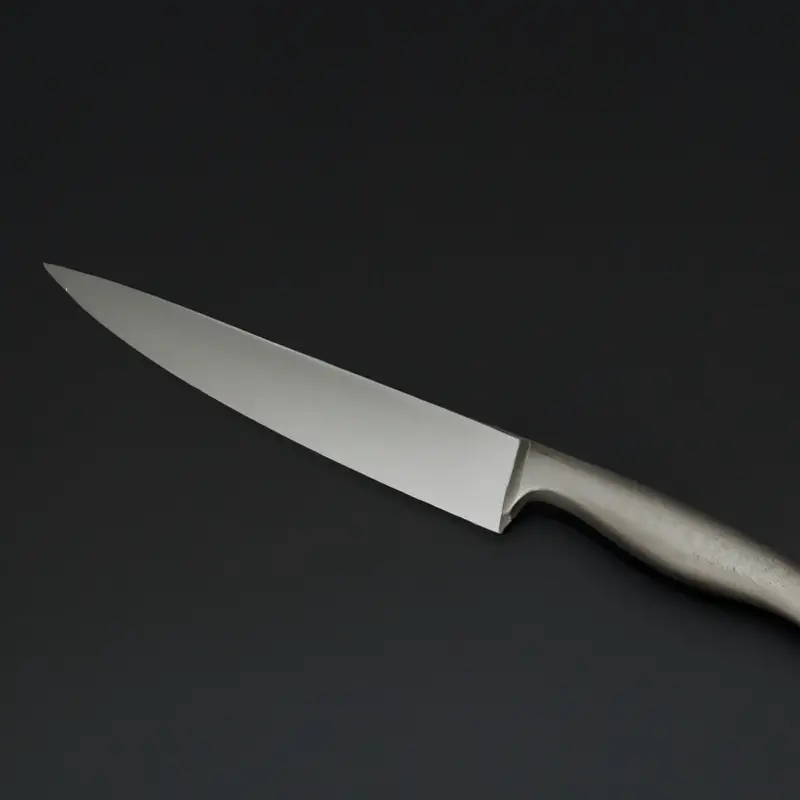
Required Ingredients And Tools For Perfect Julienne Vegetable Cuts Using Santoku Knife
To create perfect julienne vegetable cuts using a Santoku knife, you will need a few essential ingredients and tools. These include:
- Fresh vegetables – Opt for firm vegetables like carrots, cucumbers, zucchinis, and beetroots as they are easier to cut into thin strips.
- A sharp Santoku knife – The Santoku knife is the perfect tool for julienning because of its straight blade and thin profile. Make sure it is sharp to avoid damaging the veggies and to achieve even cuts.
- Cutting board – Choose a sturdy cutting surface that won’t move around while cutting.
- Clean kitchen towel – Use it to wipe the vegetables clean of any excess moisture.
- Vegetable peeler – Use it to peel the vegetables before cutting.
- Ruler – This will guide you in cutting the veggies into even-sized pieces.
By having these ingredients and tools, you can achieve perfect julienne cuts with ease and precision.
How To Choose The Right Vegetables For Julienne Cuts With A Santoku Knife
When choosing vegetables for julienne cuts with a Santoku knife, it is important to consider the vegetable’s shape, texture, and size. Firm vegetables such as carrots, zucchini, and cucumbers work well for julienne cuts.
Avoid vegetables that are too soft, such as overripe tomatoes or avocados, as they may not hold their shape during cutting.
It is also important to choose vegetables that are straight, without too many curves, as this will make cutting easier and more consistent. In terms of size, choose vegetables that are the appropriate length for your knife blade.
With these factors in mind, you can choose the right vegetables for perfect julienne cuts using a Santoku knife.
How To Prepare Your Vegetables For Julienne Cuts With A Santoku Knife
Preparing vegetables for julienne cuts with a Santoku knife requires some essential steps. Firstly, wash the vegetables and pat them dry with a clean towel.
Then, slice off the top and bottom of the vegetable to create a flat surface.
Next, peel the vegetable with a vegetable peeler or knife. Cut the vegetable into sections that fit comfortably in your hand.
Finally, slice the vegetable into thin, even strips, approximately 1/8 inch by making smooth, controlled cuts with your Santoku knife.
Following these steps will ensure that your vegetables are uniformly cut for perfect julienne prep.
Step-by-step Guide To Julienne Vegetables With A Santoku Knife
Step-by-step Guide To Julienne Vegetables With A Santoku Knife:
- Wash and dry your vegetables thoroughly before cutting with a Santoku knife.
- Cut the vegetable in half and slice off the ends.
- Place the vegetable flat side down on the cutting board.
- Make thin slices along the length of the vegetable to create planks.
- Stack the planks and cut into thin matchsticks, using the tip of the Santoku knife to guide the cuts.
- Once you reach the end of the vegetable, turn it over, and repeat the process on the other side.
- Repeat until you have the desired amount of julienne vegetables.
- Use the julienne vegetables immediately or store them in an airtight container in the refrigerator for up to 2 days.
By following these simple steps and using a Santoku knife, you can achieve uniform and consistent julienne cuts every time.
Tips And Tricks To Achieving Uniform And Consistent Julienne Cuts With A Santoku Knife
Tips And Tricks To Achieving Uniform And Consistent Julienne Cuts With A Santoku Knife:
- Use a sharp Santoku knife to make precise cuts.
- Hold the vegetable firmly and make sure it is stable on the cutting board.
- Cut the vegetable into uniform slices before slicing them into julienne strips.
- Focus on keeping the blade perpendicular to the cutting board while slicing.
- Use a sawing motion with the knife to make the cuts.
- Practice with different vegetables to get the hang of it.
- Use a guide to ensure even cuts, such as a mandoline slicer or a julienne peeler.
- Take breaks and rest your hand to prevent injury or fatigue.
- Keep the blade clean and dry to prevent rust or corrosion.
- Store the knife safely and securely to prevent damage.
Shortcut Techniques For Julienne Cuts Without Compromising Quality With A Santoku Knife
Shortcut Techniques For Julienne Cuts Without Compromising Quality With A Santoku Knife:
- Use a mandoline or a vegetable peeler to create thin slices of vegetables. Stack them up and cut them into thin julienne strips with your Santoku knife.
- Use a julienne peeler to create uniform strips of vegetables that can be easily cut into julienne strips with your Santoku knife.
- Cut vegetables into thin, even slices with your Santoku knife at a slight angle. Stack them up and then cut into julienne strips.
Remember to keep your fingers curved and tucked under in a “claw” to avoid any accidents while cutting. With these shortcuts, you’ll achieve consistent and uniform julienne cuts in no time!
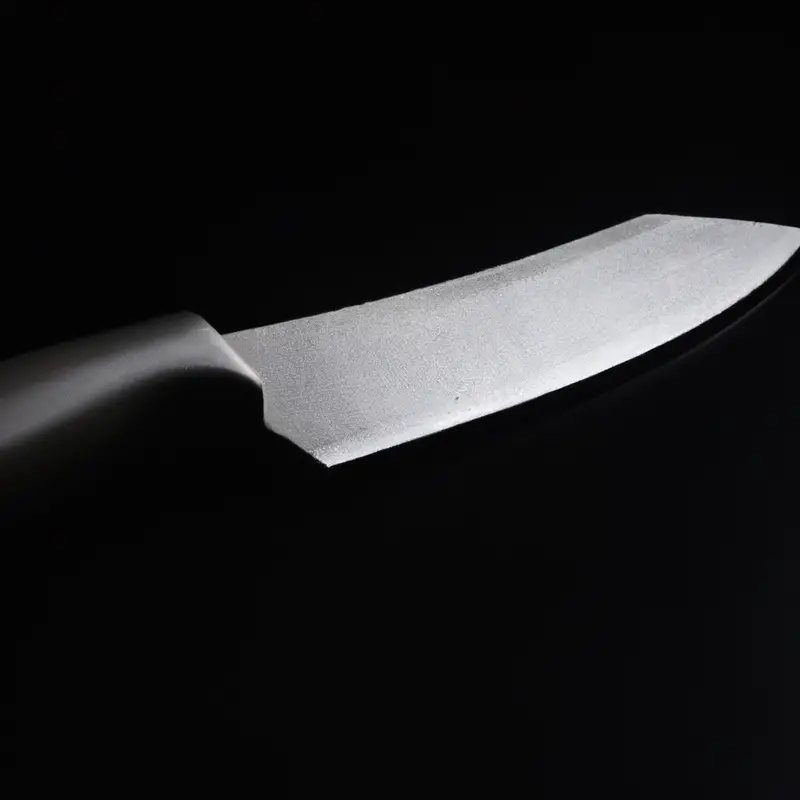
How To Care For Your Santoku Knife After Julienne Vegetable Preparation
To maintain the quality of your Santoku knife after julienne vegetable preparation, it is important to clean and store it properly. Here are some tips on how to care for your Santoku knife:
- Wash your knife with warm water and mild detergent.
- Dry your knife immediately after washing to prevent rusting.
- Use a honing steel to maintain the sharpness of the blade.
- Avoid using harsh abrasives or scrubbers that can damage the blade.
- Store your Santoku knife in a sheath or knife block to protect the blade.
- Sharpen your knife regularly to keep it in top condition.
By following these simple tips, you can ensure that your Santoku knife stays in excellent condition and continues to produce perfect julienne vegetable cuts for years to come.
Final Verdict
Mastering the art of julienning vegetables is made easy with the Santoku knife. From selecting the perfect vegetables to preparing them for the perfect cuts, this versatile knife makes the process seamless.
By following the step-by-step guide and utilizing the tips and tricks mentioned above, you can achieve uniform and consistent julienne cuts in no time.
It’s crucial to remember safety precautions when using a Santoku knife and to keep it well-maintained after every use. Empower yourself with the knowledge and confidence to showcase your culinary skills with the Santoku knife.
Happy chopping!

